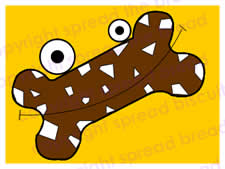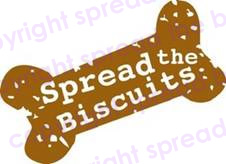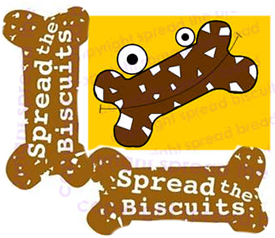|
1. Start with your group or buddy to help with the
project.
2. Who could use some animal “bread”?
Are there animals in your neighborhood that have done
something above and beyond—maybe in your eyes they are
an “animal hero”?
Suggestions:
Animals can help humans in many ways:
• Eyes for those who are blind (dogs and miniature horses)
• Ears for those who can not hear
• Hands for those who are mobility impaired (Capuchin
monkeys are especially adept at this) • Dogs, pigs and
miniature horses pull wheelchairs
• Search and rescue animals
• Trained dogs with sensitive noses to sniff out bombs,
illegal drugs, and other contraband.
• Companion animals provide emotional support for people
in hospices, hospitals, and other situations in which
loneliness and lack of stimulation are continual problems
• Companion animals help those with autism connect with
the world (parrots are especially good for this)
• Dogs trained to alert their masters their blood sugar
has dropped or they are about to have a seizure
• Dogs trained to detect the early stages of some cancers
through their sense of smell
• Therapy cats can help humans lower their blood pressure
and reduce stress by creating a calming environment
when stroked
Other Suggestions: Contact local animal shelters,
animal hospitals, and pet adoption centers. Think about
how many biscuits you think you and your helpers can
produce so you can offer a realistic guess to the receiving
organization.
Contact: When you call the organization, tell
them that you would like to donate homemade bread and
ask whom the best person is to talk to about this. Write
down the contact person’s name and number so you have
it handy in the future. Ask when a good time would be
to drop off the bread.
How many do you think you will need to make?
Think about how many you think you and your helpers
can produce so you can offer a realistic guess to the
receiving organization.
3. Spread the Word!
If you just want to involve your troop or group in
the bread baking and spreading, great!
Otherwise, you can ask other groups or friends to help
or to promote your project. Make sure you let them know
WHEN and WHERE you need the loaves.
Dogs, cats, and other domestic animals LOVE biscuits.
However, it is preferable not to feed them the same
biscuits that we love, because of the sugar factor.
To maintain a healthy animal sugar and salt should be
negligible as far as their in take is concerned.
CLICK here for recipes
you can use.
You can find some great dog, cat, bird, and horse
biscuit recipes on these sites: Banana Biscotti, Cat
Chow Cookies, Horse Muffins and more… http://www.thatsmyhome.com/general/doghouse/
http://animalsnackables.com
www.hungrymutt.com
http://www.all-natural-dog-treat.com/homemade-dog-treat-recipes.html
4. Bakers start your ovens…
Mix up a batch of your favorite recipe or mix and start
baking.
Remember that animals have different taste buds than
we do. Stay away from anything sweet.
According to the American Veterinary Medical Association,
these foods are not safe for pets:
- Alcoholic beverages
- Chocolate (bakers, semi-sweet, milk chocolate)
- Coffee (ground, beans, chocolate-covered espresso
beans)
- Moldy or spoiled foods
- Onions and onion powder
- Garlic and garlic powder...
- Macadamia nuts
- Raisins and grapes
- Avocado
- Hops (used in home brewing)
- Fatty foods
- Bones
- Milk
- Raw eggs
- Raw or undercooked meat
- Products containing the sweetener xylitol
Decorate: You can use neat animal cookie cutters
to make fun designs. You can also decide just how to
package your special treats. Maybe you’ll use lunch
bags, small boxes or some other way to deliver your
message of appreciation and love. Think of these treats
as very special presents. Notes, poetry and quotes are
great, as are bows, gift bags, colored plastic wrap,
wrapping paper, – anything that makes your biscuits
look special, and will make those who receive them feel
special.
5. Bake a difference
As you bake your yummy animal treats, talk about who
will receive these gifts and why you think it’s important
to be generous and kind to animals.
6. Collect and prepare [If you are involving your
community in your project]
Choose a place to collect the biscuits. Allow time
to sort through the biscuits to check their condition
and appearance. You may have to discard a few..
Click
on this link for a sticker to place on the bottom of
your biscuits.
7. Stand and Deliver. Involve your bakers and
animal lovers – big and little – as much as possible
in delivering the treats. It’s great for them to see
where their generosity is going, and often the recipients
appreciate the chance to say thanks, especially animals!!!
8. Count your blessings!
Keep track of how many biscuits you baked and collected
and the places to which you donated them. Make sure
to send a public letter to the newspaper thanking bakers
for their work and telling them how many loaves were
collected. Sometimes the recipients also want to write
letters of thanks and these can go to the newspaper
as well, if you like. This serves to get more people
interested for the next time!
|



